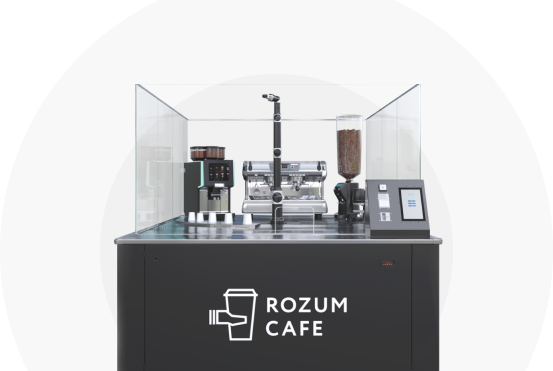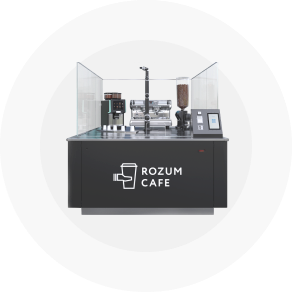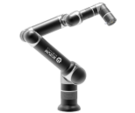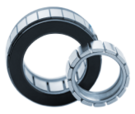It is a misleading concept to believe there is a fit-it-all solution to provide just the right propulsion in any user system. Servo motor applications are limited as well, even though the mechanisms are widely praised for precision, reduced footprint, and a range of similar enticing rewards.
Knowing the limitations and strengths of the technology, including as compared to other engines, is a sure way to avoid wrong decisions. So, what are the reasons to pick a servo over an induction motor or a stepper?
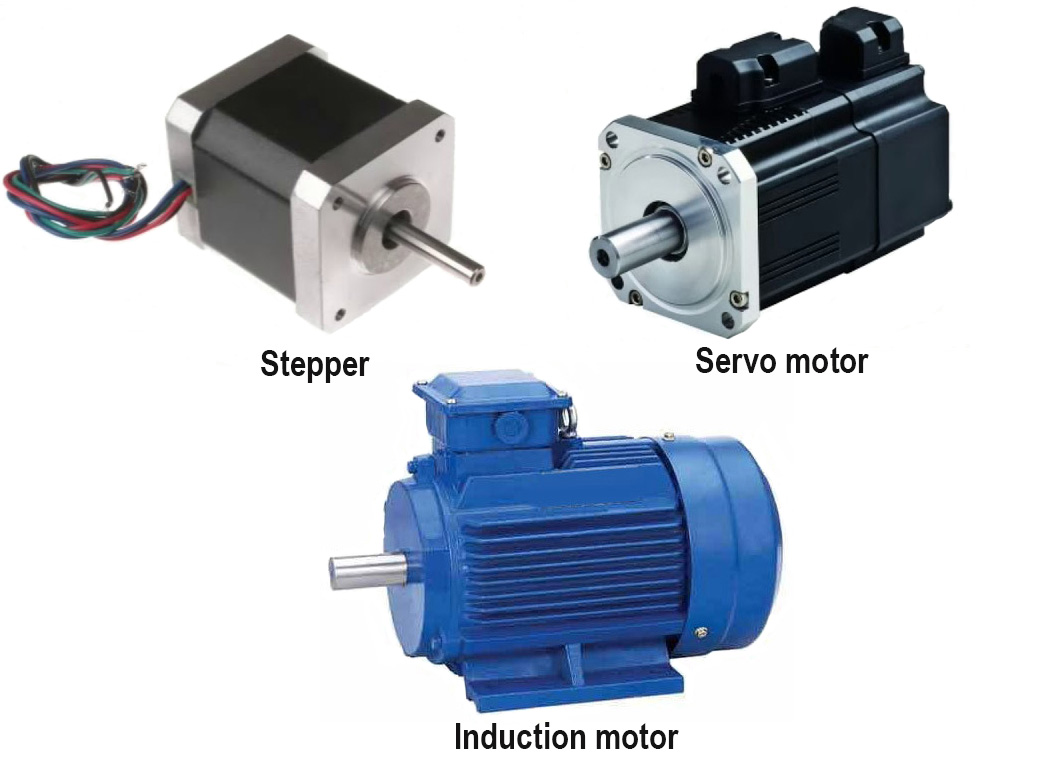
Based on performance and characteristics
Particular by design, servos inherently possess features and properties distinguishing them from the rest of electric actuators. The table below contains a comparison of three most commonly used electromotors—servomechanisms, steppers, and induction drives.
Servo
- Dimensions: Small rotor size results in low inertia rates. The dimensional range comprises nano, micro, standard, and large models.
- Torque: Capable of delivering consistent torque in ultra-dynamic applications, where acceleration and deceleration rates are quick and frequent.
- Controllability: A closed-loop circuitry, comprising a sensor and a controller, provides comprehensive motion feedback and enables fine adjustments. The controls make it possible to build multi-axis arrangements, monitored from a single master, and deliver complex motion profiles.
- Admissible speed range: Performance is stable over a wide velocity span; often include gearing to decrease RMP and produce more torque.
- Efficiency: Permanent magnets contribute to enhanced torque generation and improved efficiency.
Stepping motor
- Dimensions: Compact and typically requires no encoder. Available frames rarely fall within classes above NEMA34.
- Torque: Use conventional magnets with lower torque-generating capacity. Excellent holding moment of force, though degrading as the engine ramps up.
- Controllability: Since the devices include no sensors to provide real time feedback, accuracy of positioning achieved through counting incremental motor steps. Bad rotor governance due to friction issues at startup.
- Admissible speed range: Typically, under 1,200 RPM. To overcome friction and begin movement, additional force is needed.
- Efficiency: Due to high holding torque and pole count, power uptake at zero velocity is low.
Induction engine
- Dimensions: Heavy and bulky. Best fit in industrial high-load machines where building servo motors gets too expensive because of the need to increase the overall quantity of permanent magnets.
- Torque: At least by 40% less than the output of servomechanism with equivalent sizing.
- Controllability: Efficient alternative to support motion in an application with a single axis and simple trajectories.
- Admissible speed range: Demonstrate optimal performance when speed remains invariable over a work cycle.
- Efficiency: As size reduces, efficiency degrades.
Cost is another consideration playing a significant part in the selection process. Integrating a servomechanism into an application is perhaps the most expensive option. Both induction and stepper motor technologies are cheaper.
Based on the application type
An induction engine is a perfect fit where position or speed feedback is not essential, velocity is constant, and the equipment has to handle substantial loads, up to 30-40 HP. Their higher inertia due to a larger footprint turns out to be a pro in such tools as a crusher. Historically, the devices have been used in material transportation conveyors, rotary tables, fans and other unsophisticated setups.
A stepper is cost-efficient, though inferior to a servo motor in precision. Such devices function at their best at low RPM and acceleration rates. Typical applications include medical and biotech hardware, security and defense solutions, semiconductor production.
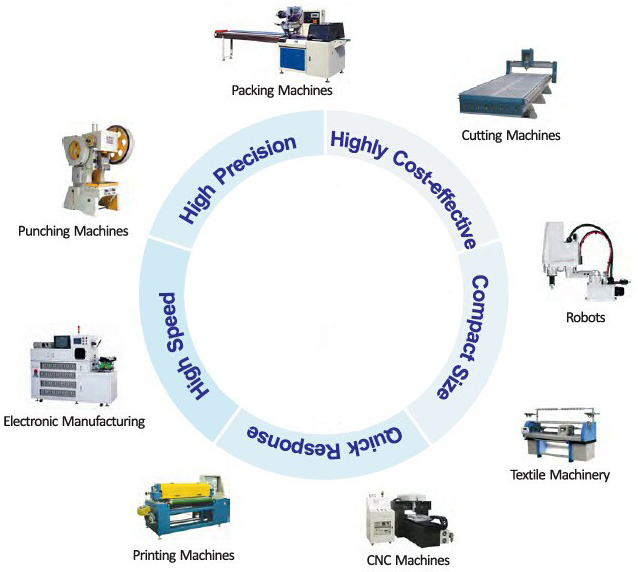
Servos excel at accuracy, resolution, and repeatability. When fitted with gearboxes, the drives produce ultra-high torque. Closed-loop motion control makes it possible to retain loads at preset angles as long as necessary. However, to attain the effect, the device has to adjust the motor location continuously, which entails extra power consumption. The devices are cost-intensive because of the sophisticated underlying technology, but the price differential tends to reduce over years. Typical applications suitable for driving with servo motors are systems operating at high velocity and acceleration rates, where the positioning accuracy requirement overweighs the price consideration.
Specific servo motor applications
Apart from the above general description, it is possible to name a number of distinct domains where servomechanisms have proved to drive efficiently various hardware components. Look up the table to find out if your system or machine is one of them.
Domain: Robotics | Details of executed operations/ Benefits: In the field, servo actuators are employed in a variety of tasks: to move robot joints, to operate work tools, or to rotate wheels of self-propelling machines. Designed products vary from hobby models to giant industrial robots. With micro or nano modifications, inventors create robotic hands with dexterity of movements close to a human limb. Latest inventions include collaborative solutions sharing a common workspace with a human being.
Benefits:
- compact size
- quick and easy to embed into a robot body or wheels
- ultra-precise linear and angular positioning
- scalability based on the ability to add multiple devices to the same power chain
- software upgrades on a continuous basis
Domain: Industrial automation | Details of executed operations/ Benefits: In the domain, applications cover various machinery, such as filling and packaging, metal and wood cutting, trimming, and contouring, as well as CNC and machines used in the textile industry.
Benefits:
- ease of integration, including into enterprise and process management systems
- simultaneous control over multiple work axes
- feedback allows to detect abnormal moves and ensure strict compliance with command input
- turn, cut, trim, and perform other processing operations with consistency and uniformity
- reduced maintenance costs and great accuracy due to removal of mechanics, such as backshafts, pulleys, etc.
Domain: Entertainment | Details of executed operations/ Benefits: Solar tracking and antenna positioning . Specialized software calculates proper coordinates for a panel to soak up sunlight energy or an antenna to receive high-quality signal and commands the engine to go the position.
Benefits:
- in-built capabilities enabling direct communication with software components
- ultra-accurate angular displacement to follow the sun or signal as required
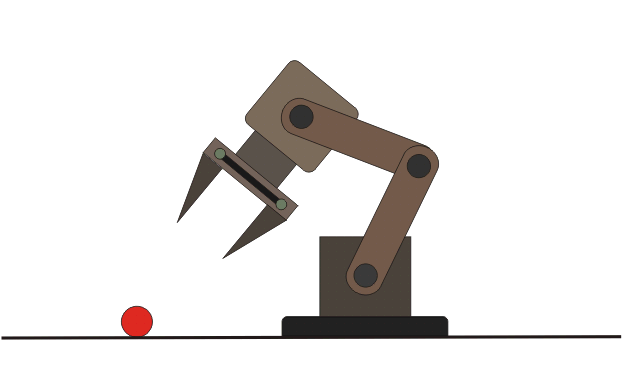
Other known applications controlled by servo motors include printing hardware, ejection mechanisms in disk drives, as well as automatic door release. The actuator type, tailored to special hygiene and compliance requirements, is spreading across pharmaceutical and food-processing industries.
About the RDrive series application
The reasons to consider integrating an RDrive servo are as follows:
- The servomechanisms are fast and powerful. An integrated harmonic gearbox augments their torque capacity by the factor of 100.
- Mean time to failure of 35,000 hours and remarkable longevity attributable to highly reliable self-designed constituent parts.
- It takes only as much as 1.5 minutes to connect and start using any RDrive servo motor in an intended application.
- Incorporating two absolute encoders, the actuators feature outstanding accuracy—to the 1,000th degree.
- The hollow shaft, light weight, and reduced footprint achieved through utilization of proprietary manufacturing technology facilitate integration into machinery of various purposes and designs.
- Smart management with an embedded controller takes away much of the governance burden from process control systems. Trajectories and speed profiles are tailored to operating tasks and work conditions of individual motors.
- Via the controller, users get access to safety functions (e.g., temperature overload interruptions), as well as the functionality to program servo moves—via the CANOpen or the Application Programming Interface.
RDrive products were developed as an original product under the PULSE project—to function as actuators in the robot by Rozum Robotics. Now, the engines are sold as a separate lineup comprising five models in different sizes. In addition, flexible customization options are available, extending their usage to more domains—both industry- and commerce-oriented.
